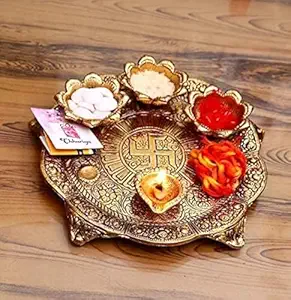માનો ગરબો રે
રમે રાજ ને દરબાર
રમતો ભમતો રે આવ્યો કુંભારી ને દ્વાર
અલી કુંભારી ની નાર
તું તો સુતી હોય તો જાગ
માના ગરબે રે
રૂડા કોડિયા મેલાવ
માનો ગરબો રે રમે રાજ ને દરબાર
રમતો ભમતો રે આવ્યો સોનીડા ને દ્વાર
અલી સોનીડા ની નાર
તું તો સુતી હોય તો જાગ
માના ગરબે રે
રૂડા જોળિયા મેલાવ
માનો ગરબો રે રમે રાજ ને દરબાર
રમતો ભમતો રે આવ્યો ઘાચીડા ને દ્વાર
અલી ઘાચીડા ની નાર
તું તો સુતી હોય તો જાગ
માના ગરબે રે
રૂડા દિવેલીયા પુરાવ
માનો ગરબો રે રમે રાજ ને દરબાર
Overview of "Mano Garbo Re Rame Raj"
Title & Meaning
'Mano Garbo Re Rame Raj' is a popular traditional Gujarati Garba song, performed during Navratri, celebrating devotion, dance, and festive spirit.
Artist & Recordings
This Garba is sung by various regional artists across Gujarat and recorded for live Navratri events as well as studio albums.
Genre & Occasion
A devotional folk Garba performed during Navratri nights, community Garba events, and cultural gatherings honoring Goddess Amba.
Language & Dialect
Lyrics are in Gujarati, incorporating local dialects and traditional expressions relevant to the festival and folk culture.
Popularity & Reach
The song enjoys wide popularity in villages, towns, and urban Navratri events, maintaining its charm across generations.
Lyrics Structure & Themes
Devotional Invocation
Lyrics begin with devotional praise to Goddess Amba, invoking her blessings for prosperity and happiness.
Repetitive Chorus
Chorus lines repeat to enhance rhythm, encourage audience participation, and guide dancers through synchronized steps.
Imagery & Symbolism
Uses symbolic imagery of festival lights, Garba circles, and devotional rituals to create a vivid celebratory atmosphere.
Community & Togetherness
Emphasizes social unity, collective devotion, and enjoyment through group singing and dancing.
Emotional Resonance
Lyrics evoke joy, excitement, and spiritual connection among devotees during Garba nights.
Musical & Performance Elements
Instrumentation & Rhythm
Traditional instruments such as dhol, dholak, and hand claps provide energetic and lively rhythm for dancing.
Tempo & Dynamics
Begins with moderate tempo and gradually increases intensity to elevate the dancers' enthusiasm.
Live vs Studio Renditions
Live Garba features extended verses and audience interaction, while studio recordings are concise and polished.
Dance Cues & Movements
Lyrics guide clapping, spinning, and footwork, forming synchronized circular Garba patterns.
Audience Participation
Encourages everyone to join in singing and dancing, creating an inclusive and festive environment.
Festival & Cultural Significance
Navratri Connection
This Garba is a highlight of Navratri, invoking spiritual energy and enthusiasm during the festival nights.
Spiritual Meaning
Lyrics reflect devotion, surrender, and prayers to Goddess Amba for blessings and protection.
Cultural Heritage
Represents the rich Gujarati folk traditions, preserving songs, rhythms, and festival rituals across generations.
Community Bonding
Unites people through collective Garba singing and dancing, fostering social cohesion and shared celebration.
Joyful Celebration
Brings happiness, devotion, and cultural pride to participants and audiences during Navratri.
How to Use & Share
Translations & Transliteration
Provide translations and transliterations for non-Gujarati audiences to understand and connect with the Garba's meaning.
Audio / Video Embeds
Embed audio and video performances of Garba to increase engagement and allow users to enjoy the music interactively.
Printable Lyrics & PDFs
Offer downloadable PDF versions of lyrics for personal, educational, or community Navratri events.
Performance & Dance Tips
Provide guidance on costumes, Garba steps, and timing tips to help performers enhance their dance experience.
SEO & Social Media
Optimize with keywords like Gujarati Garba, Navratri Garba, Mano Garbo Re Rame Raj, and Goddess Amba; include social sharing buttons.
'Mano Garbo Re Rame Raj' is a popular traditional Gujarati Garba song, performed during Navratri, celebrating devotion, dance, and festive spirit.
This Garba is sung by various regional artists across Gujarat and recorded for live Navratri events as well as studio albums.
A devotional folk Garba performed during Navratri nights, community Garba events, and cultural gatherings honoring Goddess Amba.
Lyrics are in Gujarati, incorporating local dialects and traditional expressions relevant to the festival and folk culture.
The song enjoys wide popularity in villages, towns, and urban Navratri events, maintaining its charm across generations.
Lyrics begin with devotional praise to Goddess Amba, invoking her blessings for prosperity and happiness.
Chorus lines repeat to enhance rhythm, encourage audience participation, and guide dancers through synchronized steps.
Uses symbolic imagery of festival lights, Garba circles, and devotional rituals to create a vivid celebratory atmosphere.
Emphasizes social unity, collective devotion, and enjoyment through group singing and dancing.
Lyrics evoke joy, excitement, and spiritual connection among devotees during Garba nights.
Traditional instruments such as dhol, dholak, and hand claps provide energetic and lively rhythm for dancing.
Begins with moderate tempo and gradually increases intensity to elevate the dancers' enthusiasm.
Live Garba features extended verses and audience interaction, while studio recordings are concise and polished.
Lyrics guide clapping, spinning, and footwork, forming synchronized circular Garba patterns.
Encourages everyone to join in singing and dancing, creating an inclusive and festive environment.
This Garba is a highlight of Navratri, invoking spiritual energy and enthusiasm during the festival nights.
Lyrics reflect devotion, surrender, and prayers to Goddess Amba for blessings and protection.
Represents the rich Gujarati folk traditions, preserving songs, rhythms, and festival rituals across generations.
Unites people through collective Garba singing and dancing, fostering social cohesion and shared celebration.
Brings happiness, devotion, and cultural pride to participants and audiences during Navratri.
Provide translations and transliterations for non-Gujarati audiences to understand and connect with the Garba's meaning.
Embed audio and video performances of Garba to increase engagement and allow users to enjoy the music interactively.
Offer downloadable PDF versions of lyrics for personal, educational, or community Navratri events.
Provide guidance on costumes, Garba steps, and timing tips to help performers enhance their dance experience.
Optimize with keywords like Gujarati Garba, Navratri Garba, Mano Garbo Re Rame Raj, and Goddess Amba; include social sharing buttons.


